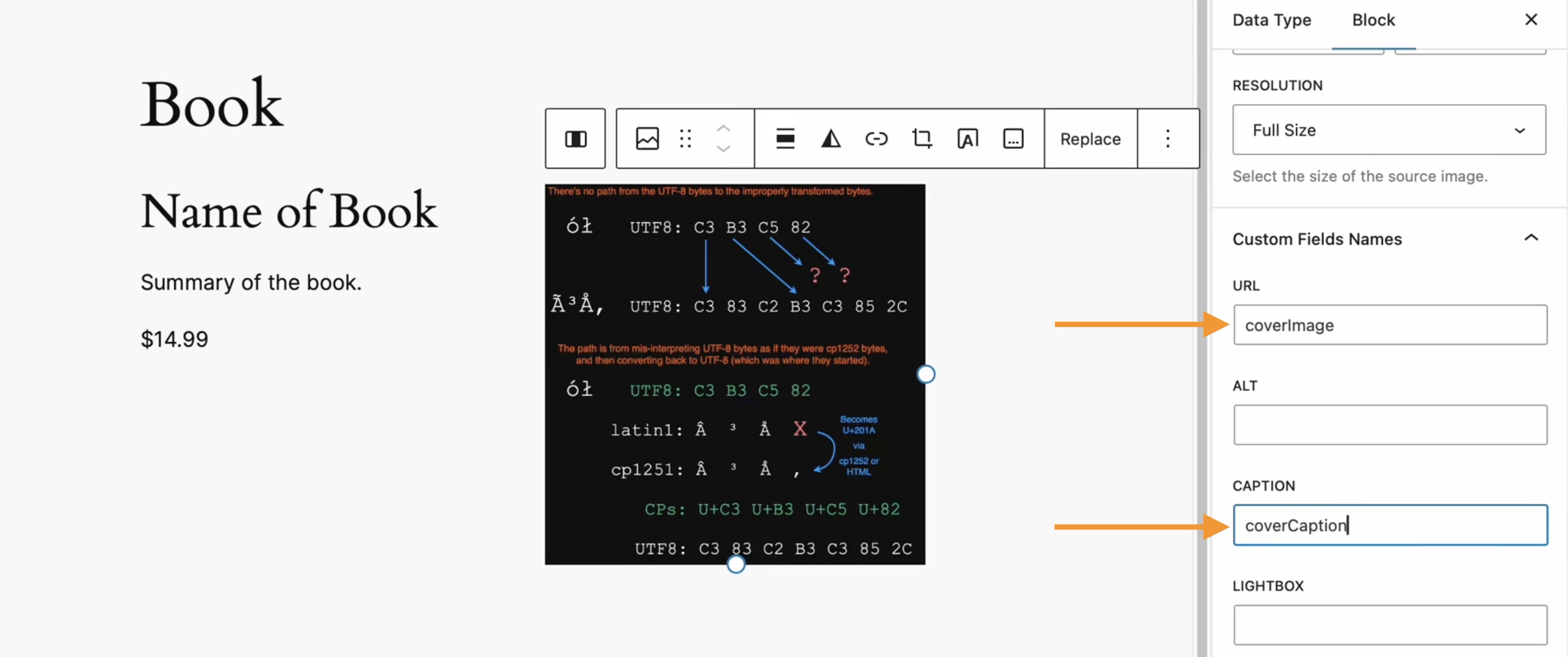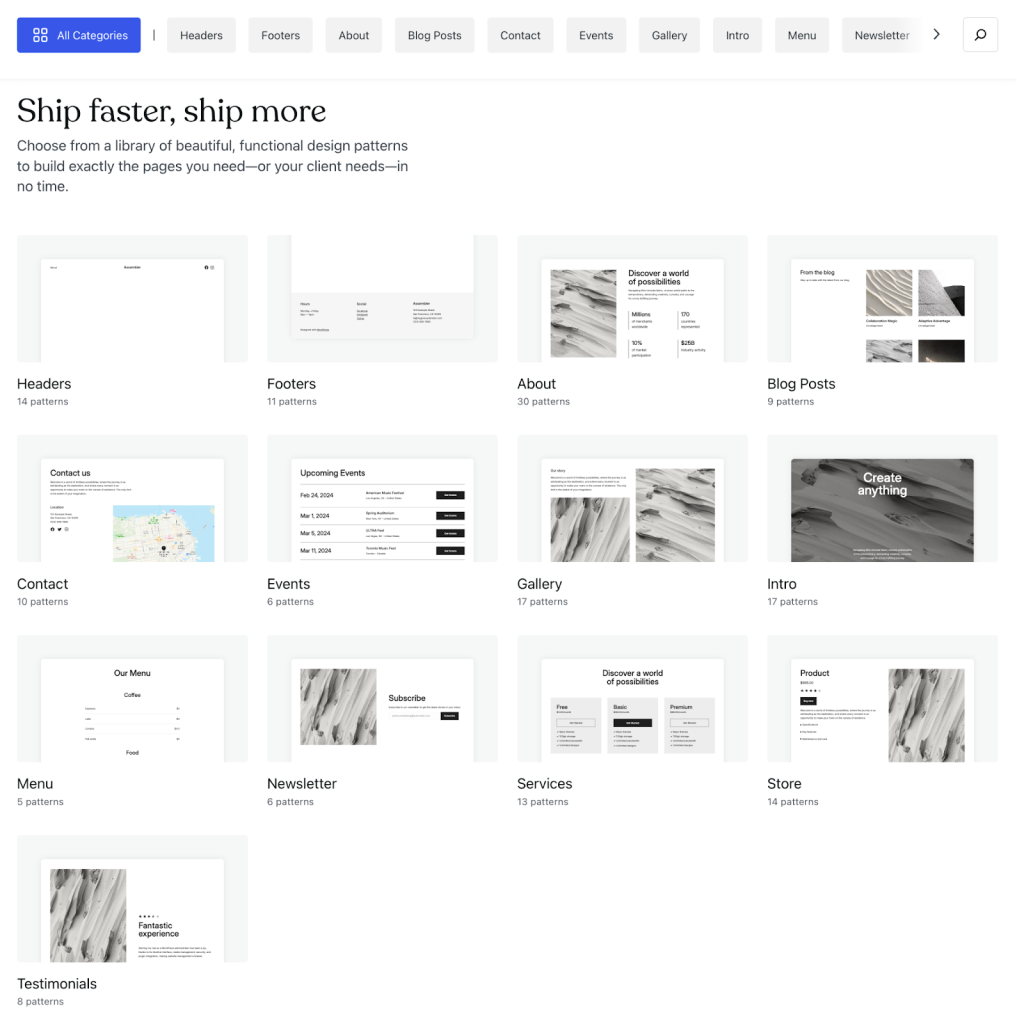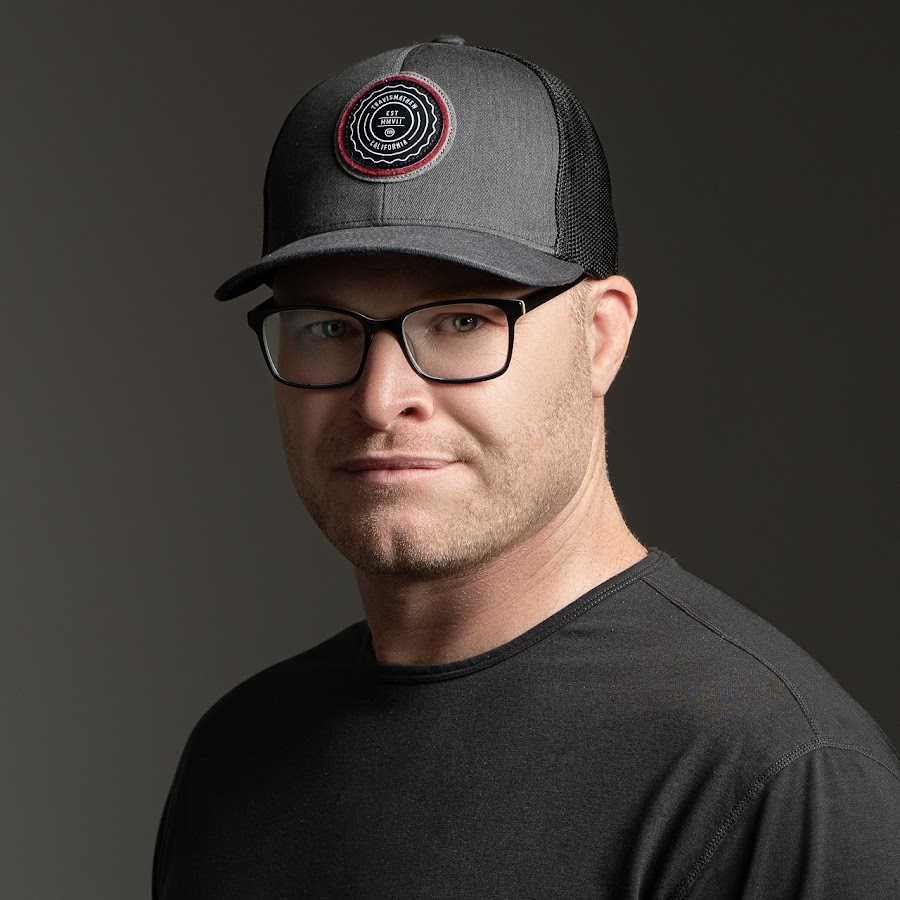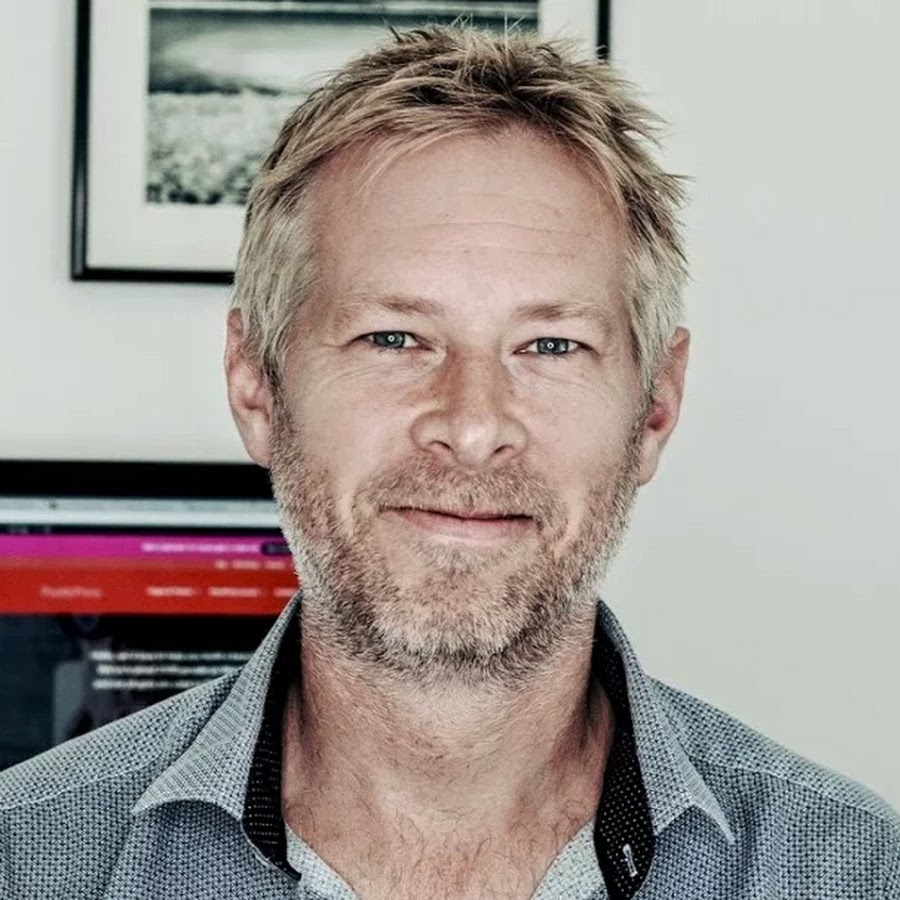Explore the WordPress Data Liberation project in this exclusive behind-the-scenes episode discussing WordPress migrations. Joining us is WordPress Executive Director Josepha Haden Chomphosy, along with special guest and sponsored contributor Jordan Gillman. Together, they’ll look at how the project is expanding opportunities to benefit from the freedom and flexibility WordPress offers. Don’t miss this enlightening discussion!
Credits
Host: Josepha Haden Chomphosy
Guest: Jordan Gillman
Editor: Dustin Hartzler
Logo: Javier Arce
Production: Brett McSherry and Nicholas Garofalo
Song: Fearless First by Kevin MacLeod
Show Notes
Transcript
[00:00:00] Josepha: Hello, everyone, and welcome to the WordPress Briefing, the podcast where you can catch quick explanations of the ideas behind the WordPress open source project, some insight into the community that supports it, and get a small list of big things coming up in the next two weeks.
I’m your host, Josepha Haden Chomphosy. Here we go!
[00:00:28] (Intro Music)
[00:00:40] Josepha: Today, I want to talk about the Data Liberation project that we first introduced at State of the Word. It’s a very big project with a lot of philosophical underpinning. So today, I have with me Jordan Gillman, who’s going to help us dig in a little bit deeper.
Jordan, welcome to the show. It’s so great to have you here.
[00:00:57] Jordan: Thank you. It’s lovely to be here.
[00:00:59] Josepha: Before we get started, why don’t you tell us a little bit about yourself? Like what parts of the WordPress project you contribute to, and how long you’ve been hanging around in open source?
[00:01:09] Jordan: Yeah, beautiful. I would love to. My name is Jordan. I live on the east coast of Australia, about an hour out of Sydney—about 10 minutes from the beach, which is a pretty great place to live. My relationship with WordPress began 19 or 18 years ago, I guess. I was tinkering with Movable Type, and they changed their license.
And I went, I need to find something that’s free. And at that point, I had no idea what open source was. I just knew that I could use this WordPress platform for free to you know, tinker around and build websites. At the time, I was a graphic designer and, so web stuff was just fun. But gradually, that kind of took over, and I ended up doing a lot of front-end development and eventually freelancing for about ten years, building WordPress sites for churches and schools and kind of non-profit organizations like that. And through that, I’ve also then ended up doing some support for WordPress and landed being lucky enough now to be sponsored to contribute full-time into the WordPress project. I do a lot of work with the support team, so working in the public forums, particularly on core WordPress plugins and themes like Gutenberg and bundled themes, Twenty Twenty-Four.
[00:02:15] Jordan: But also working with the team itself, trying to make sure the forums are a nice place for people to hang out and answer questions and get their questions answered. And I also help out with a few other things around the place. I have an eye on the work the plugins team’s doing, working with the WordPress Foundation on a few different things. I’m lucky to have my fingers in a few pies but the biggest pie at the moment I have is the Data Liberation project.
[00:02:36] Josepha: Yeah. So let’s talk about that. We’re going to give everyone a quick like starting line. If, for some reason, you have not read or seen anything about the WordPress project plans so far in the last four months, you may not know what the Data Liberation project is, and that’s fine, too. Because Jordan and I are here to help you understand what it is. But, the Data Liberation project is something that Matt introduced to the project at State of the Word last year in December. And you, Jordan, are the one who are really helping us to take this project into a space where we have everything that we need, all the kind of tools and guides that users will need in order to do what exactly? Like, let’s go through what this Data Liberation project is from your standpoint and what made you excited to work on it.
[00:03:27] Jordan: Thank you. Yeah, so the general idea of the Data Liberation project is it should be super duper easy for anyone to bring their site to WordPress. That’s the first main part of it, is that regardless of the platform you are on currently, be it something that’s pretty open, be it something that’s really kind of walls and closed, be it a social media platform, another web building platform, it should be really easy to bring your content over to a WordPress site, because once it’s in a WordPress site, it’s essentially free. You can then take it and do what you want with it once it’s in WordPress, but we want to make it as easy as possible to get it here, basically.
[00:04:03] Josepha: Free as in liberated, not free as in like, now the stuff that was in your mind has no value.
[00:04:10] Jordan: Yeah, free as in liberated, free as in you own it and can do what you want with it. So that’s a big part of it. It’s, let’s get, make it easier for people to come to WordPress. I think it’s also important that if we’re talking about Data Liberation and freedom of content and democratizing publishing, that also means we make it easier for people to take their content from WordPress and use it somewhere else if that’s the decision that they make. And there’s some moves we can make to make that easier and nicer for people as well.
[00:04:37] Josepha: Yeah. Yeah, absolutely. So, recently, we just finished up an outreach period where we were making sure that we were talking to, like, folks in the community and anyone, anyone who uses WordPress that wanted to talk to us about what they needed, what they were hoping for, what issues, what pain points they’ve had when they were looking at site migrations.
So, what, to the best of your knowledge at the moment, like what are the big themes that you got out of that feedback loop? Out of that outreach?
[00:05:08] Jordan: Yeah, thank you. That was really enjoyable, actually. I was lucky enough to, I got to speak to a bunch of people in person at WordCamp Asia, which was great. We’d done some, some online, did a hallway hangout, and we’ve had a survey out for a while to folks predominantly kind of in the hosting agency freelancer space. So, folks who are working with end users who are often the ones doing migrations. We got a lot of feedback about WordPress to WordPress migration and the challenges of different hosting platforms and access from users and a bunch of information, which is useful and interesting but not immediately relevant to the comparison to migrating to WordPress from another platform entirely.
But at the same time, talking to particularly agencies who do a lot of big-scale migrations, there’s a lot of challenges just when it comes to, for starters, getting the content out of the platform. Some platforms are kind of helpful, and they’ll even provide a WordPress formatted export. For every one of those, there are…
[00:06:03] Josepha: That’s very helpful.
[00:06:05] Jordan: Yeah, those are super helpful. For every one of those there are probably two or three who aren’t as helpful, and you start to resort to tricks with, you know, manually exporting databases or getting RSS feeds and trying to convert them, or a lot of agencies said, “You know what? Often, we end up just copying and pasting page by page from the source site into a brand-new WordPress site.”
[00:06:27] Jordan: So, there’s challenges about the access to the content. There’s lots of challenges around getting the content from the shape of one platform into WordPress. What constitutes a page? What constitutes a post? How do we handle all of the extra metadata of images and dates and taxonomies, and anything else that might be associated with a blob of content in one platform?
How do we translate that into the way WordPress likes to handle those things? And particularly taking that to another level, even just bringing it into the Block Editor? It was great to hear how many people are just migrating straight to the Block Editor like they want the content in blocks, which is wonderful to hear.
[00:07:05] Josepha: Yay!
[00:07:05] Jordan: But there are challenges. I know it’s great. But there are some, there are challenges with that and getting it to kind of format the way they expect, when it comes in particularly because there’s some kind of functional challenges with that in validating the way the content comes in because it all happens client side in the browser.
It’s hard to do that in big batches. So, there was some really great feedback around all of those kinds of places. It was really interesting to see how much of it centers around that getting the content and then getting the content, and yeah, for the agencies I spoke to, they do a lot of trial and error of, you know, custom scripts, and let’s try it. Oh, that did this. Let’s try again with a few tweaks. So I’m excited to see how we can kind of make that easier for them and, you know, maybe get it happening first time.
[00:07:49] Josepha: Yeah, absolutely. It has been a long time since I migrated any sites personally, but I remember the first time that I tried to migrate a site. So, I was on Xanga before Xanga was on WordPress, and I remember that when I was like, I can’t figure out this WordPress thing, but I think I need some stuff in it so that, like, I know what it’s going to look like.
[00:08:11] Josepha: I know what to move around cause I didn’t know the names for anything in, in CSS or HTML. Like I didn’t know what to look for in the code, but if I had a piece of content in it, I could be like, find the content in the code and then move that. And so I was like, I’m going to export everything because there was an export option in Xanga. And move it into WordPress, and WordPress was like if you can manage to get it out of Xanga, super easy to get it in. But it was actually really difficult to figure out how to get it out. And fortunately, I’d only been writing on it for like four years, three, four years at that point. So there wasn’t like, a huge amount of content, but also, I was a pretty prolific writer. I was a bad writer, but the only way to get better at things you’re bad at is to do it a lot. So, I did a lot of bad writing for three or four years. And I think that in the end, I did, like, just pay some service to scrape everything that was public on it, and then go through and get the private things and pull it out later.
[00:09:08] Josepha: I think later on down the road, I did an actual like full migration when it was easier to get it done and got all the content out, including like drafts and private posts and things. So that’s good. But yeah, it was really difficult then. And then, like, we have the blocks now that are supposed to help get a little bit more consistency in the way that you can move content in and out of a WordPress site.
And is that something that we are then focusing on with the Data Liberation project? Is that something that’s being done in concert with our Gutenberg plugin, or like how are we accounting for that?
[00:09:46] Jordan: That is a great question. The way things are looking at the moment, having come out of this feedback and the way we’re looking at going forward that, that work on getting content coming into blocks is going to be a really, really major part of Data Liberation. And it kind of sits in the middle of things to my mind.
[00:10:01] Jordan: The improvements that we can make with handling the way content is transformed into blocks gives us the potential of wins in a lot of places. So, as long as we can get to the content, this work on HTML to blocks for a better, lack of a better way of putting it, gives us wins with importing from another platform because we can take the content in whatever form it is, turn it into blocks in the post editor.
It gives us wins with migrating from classic editor because, similarly, we can take the HTML of the classic editor generates and turn it into blocks. That already kind of happens, but there’s definitely some work that we can do to keep improving that. It gives us potential wins around the spaces of moving from between proprietary builders and block libraries and things. Because if we start to have a better-standardized set of ways to handle HTML into blocks.
Then, you can essentially move from whatever form your content is in into, you know, core native blocks in the editor. So, I think work there is going to be really important because it gives us a foundation to aim for from whatever the migration is happening from.
[00:11:09] Jordan: So, there’ll be some work there. There’s already work happening on the HTML API. Like, ongoingly and regularly and so we’ll be talking to those folks. There’s obviously going to be a lot of overlap with the work within Gutenberg as well, which is doing you know, parsing of content into blocks. So, it’s going to take a lot of collaboration and a lot of work from everyone, but I’m really excited because if we can get that foundational platform of transforming HTML into blocks really, really smooth, then what we can do is we can, you know, activate contributors in the community say, we’ve got this part figured out. If you can get it to here, it’s going to come in beautifully. So what we want your help with is to say, how do I get out of this platform to a format that we can do the rest? So, hopefully, we’re getting a common flow for a big part of that important migration process. And then we can throw it open to others to say, “You’ve got expertise with this platform. That’s excellent. Can you get us to here? And we’ll take it from there.” And maybe we’ll get some wins by doing that work in parallel, and we’ll really start to see some movement.
[00:12:13] Josepha: And speaking of the, we’ll take it from there. I know that also, in addition to the work that you are doing with Data Liberation and that is happening on the Gutenberg side and WordPress core in general, we also have a little bit of work happening on the after you get it to here point.
So, the folks over at Playground have been doing a bit of research about how to use the guides and tools that are in the Data Liberation repo. To run all of that through Playground so that you can not only like import it, but you can put it into Playground and check it before you launch it in someplace else, which I think is a great user-facing, like, super important thing for an everyday user to be able to have at their fingertips that way.
But then also the tour plugin that was built, I think specifically for the Polyglots team, is where we are looking at using, and I can’t remember which little project we’re doing some research on to make this possible, but we’re looking at taking that tour plugin and making it so that anyone can build a tour on anyone’s version of something in a browser so that you can just say, okay, so I did these things. I got it to here as you requested. I’m moving it to here. But now that I have got it into WordPress, what are the literal buttons I have to press in order to make sure it’s live? What do I literally have to press in order to make sure that I’m in the right time zone? Like, things like that. And we tested it on Wix, and it was able to work.
[00:13:40] Josepha: Not that we’re trying to get anyone to Wix. But on the subject of, like, getting things out of WordPress and into someone else, that sounds counterintuitive for folks, like, you’re here listening to a WordPress podcast, and we’re talking about how and why we want to make it easier for people to get their content to us, of course, but then also, if needed, get it out of a version of WordPress and either into a different version of WordPress with a new host or, whatever.
Or if this is not your long-term destination, which we think it will be once you figure us out, but like, if it’s not, like, how to get out of it, too. So, from your perspective, how does that fit with the basic philosophies of open source or of WordPress in general?
[00:14:24] Jordan: Yeah, thank you. If I may, there’s a couple of things I wanted to touch on from what you’ve said. First of all the other work that is going on in the project at the moment that you mentioned, the tour guide and the Playground, I think both of those are going to be super important to the approach we take to Data Liberation.
I wanted to elaborate just a little bit on the Playground because I’m particularly excited about the potential that gives for two particular scenarios two particular use cases for migration. One is, where I’ve already set up a WordPress site, I’ve got the theme that I’d like, and I’ve got some, you know, some plugins, maybe I’ve got a little bit there, but I want to import content, but I want to check how it is the potential for the Playground to make essentially a staging copy of my site and migrate the content into that staging copy so I can see how it lands in my chosen theme and check everything out and then go, yep, that looks great. And apply it. That’s great for it’s safe. You can check how it looks before it’s, you know, committed. So that’s brilliant. I’m excited about that. I’m also excited about the potential it has for people who don’t know WordPress, or don’t have a WordPress site, or they don’t have a host, they don’t have anything.
[00:15:30] Jordan: But if they can say, I want to see how this would go in WordPress. Playground, through some platform, somewhere, will allow them to just have an immediate in-browser preview of what their site would look like on WordPress. And if they like it, we then move them. We help them find a host. We help them export that in a way that they can use, but it helps the people who already have sites.
But I think, more importantly, it helps those who don’t have a site yet. And they don’t have to set up an empty WordPress install in order to start migrating. They can just get into it.
[00:16:01] Josepha: And also, you don’t have to, like know who your host needs to be before you can take a look at the back end of a WordPress site and see if it makes sense to you. Like I think that that is a huge, huge win on behalf of users, current users, and future users of WordPress.
It’s the try before you buy. Come kick our tires without having to find a server. If you all don’t know what we’re talking about, if you have not heard of Playground yet, you can go to playground.WordPress.net and give it a try. It’s a one-click, serverless local version of WordPress that you can test out themes on and plugins, and just like put all your data into all your content into, and pretty soon also be able to export or just load directly onto the host of your choice. It’s really, really cool.
[00:16:44] Jordan: It’s, it’s pretty much magic, I think.
[00:16:47] Josepha: Yes, I remember the first hackathon where we took it because we took it basically on a hackathon roadshow for six months. I remember the first one we took it to. Routinely, we could get developers, not me, routinely, Adam Zieliński could get a developer to do the thing, and they’d be like, I can do it if you’re next to me telling me what to do, but it’s literal magic. I don’t know what’s happening. And he was like, okay, I’ll come explain it to you. And like, he was using English, but also I was like, that is still magic. I’m so glad someone understands it. It’s brilliant.
[00:17:18] Jordan: Yeah, so the Playground I’m super excited by. I think it’s going to be really important. The tour stuff the tour functionality is going to be really important as well. Because on some level, We’re going to have to wrap all of this work on improving HTML to blocks, the process of taking an export file and importing it into WordPress, the process of telling people how to get the content, all that’s going to have to be ideally wrapped up in a nice user-friendly way so that users aren’t having to, you know, read plain text articles and then going and installing a plugin and all of those kinds of things.
I think the potential for the tours is we may have some kind of wrapper plugin or something which will detect the platform of your existing site if you put the URL in, and it will start walking you through the steps. So, part of that might be action you need to take on your existing platform, and we have some of that information already in the guides on the Data Liberation site at WordPress.org/data-liberation. That information is already there, but I’m hoping that we can start pulling those guides into the WP Admin so you just get walked through it while you’re there. And we can start using the tour functionality to really specifically pinpoint: you need to go here, now you can do this, go and click this, and just walk users through that migration process a little bit more neatly.
[00:18:37] Jordan: I’m really excited that we’re going to be able to utilize a lot of these existing projects that are exciting and happening at the moment. And I think, ideally, they’re all going to make it much easier for users to not have to jump through so many hoops. And the hoops that they do have to jump through, we can hold their hand while they do it.
[00:18:54] Josepha: Yeah, absolutely. Create safe scaffolding for fun, I used to say.
[00:18:59] Jordan: So those are the two projects existing that are happening at the moment that I’m excited about rolling into and working with for the Data Liberation work.
[00:19:07] Jordan: You also asked about the getting content back out, which is something that I’m particularly passionate about, I suppose. Which may be ironic when a lot of the aim of this project is to get people into WordPress. But I’m a really firm believer that if our mission is to democratize publishing, then that doesn’t mean just get everyone onto WordPress and go, yes, now you’re trapped. It’s like the Hotel California, you can never leave. If we’re going to be, you know, fully all in on democratizing publishing, then that means giving folks the freedom to take their content to do with it, whatever they want. It’s fair to say at the moment that that is possible.
So you can export your content from WordPress. We don’t hang onto it. We don’t lock it down. You can take it. At the moment, the format that you get that content in has some limitations. It’s fair to say it doesn’t handle bringing the media of your site particularly well unless you’re turning it into another WordPress site somewhere else.
So, the export functionality is very, very focused at the moment on migration to another host, or to a local site, or to another WordPress installation, basically. But if you want to use that content for something else, maybe another platform. Maybe you just want to have a copy of your blog posts that you can.
[00:20:17] Josepha: Print it into a book.
[00:20:18] Jordan: Yeah, to put into a book. Maybe you want to put it on a thumb drive and put it in a lockbox somewhere. Maybe you want some kind of hundred-year archive of your intellectual property that you’ve written and created. And so I think we’ve got some room to make improvements there. Not only to the way we provide content for other platforms to pick up and bring in but also just in the ways that we provide content to users who just really want to have a physical, digital copy of what they’ve created.
There are some challenges at the moment when you get an export, if you’ve got shortcodes in your content, if you’ve got content that’s generated by plugins, all kinds of dynamic content that is great when it’s a website, and WordPress is wonderful. And there’s all of these options, but if you take an export, you have references to those functions, and you have references to those shortcodes, which aren’t actually fully realized. So I think there’s some room for us to investigate what does a better export for other platforms look like and what does a better export for “I want to print it out or turn it into a book or just have a static version of that” content look like. And so I’m particularly excited about that, even though it’s kind of, bring it in, and we want to let them get it out. But that’s part of the whole liberation of data, I suppose, is, you know, the freedom to do with it what you want.
[00:21:40] Josepha: Yes, absolutely. And everything that increases freedom on the open web, I think we are in favor of. So, I don’t know if you follow many, like WordPress futurists, our people who are out there saying, if only WordPress had these additional 2,500 hours worth of work, then we could do this with it. Like, I don’t know if you follow a lot of them.
[00:22:02] Josepha: But, a lot of them look at that thing that Matt said, like, I want to say, five years ago about WordPress becoming the operating system of the web and putting some thought into what would be required to make that possible. And when we look at composable CMSs, like the option to have something that is a framework and a core of what you are doing in your digital experience of the web. And making it possible to add anything to it required.
I think that also the work that we’re doing with Data Liberation to provide a little bit more consistency and just standardization of the way that content comes in and out, I think, can only help with that potential future implementation of WordPress as the operating system for the web so that you have this basic place where you hold and manage all your content and also not only does WordPress cooperate nicely with all these other tools and applications that you can put on top of it but also all of the content has standard conversational touch points and so everything moves quickly in and out including the dynamic content that is maybe being created inside your WordPress core itself. I think that is also a really important not primary focus, but certainly future-like, if only we could get to that state kind of focus.
[00:23:31] Josepha: I’m really interested. I think that the Data Liberation project is big, and I know that we expected primarily only new contributors to work on it, but honestly, we know that’s not the case. It’s you’re working on old WordPress in here and so not necessarily new contributors. But I think that you’re right that the place for new contributors to help us is saying like we can get the content to here, we can get the data to here, and then we need help getting it into WordPress or help getting it into something else.
So, as like a last question here, or if you have things to add to that, and then I can do last question.
[00:24:04] Jordan: Okay, so to loop back to your conversation about futurists and moving content and stuff, I am really excited about this idea that the open web at the moment, I think, is really, really exciting. I just started mucking around with federating my content in the fediverse. Again, recently, I tried it a little while ago and really struggled, but I’ve just started again, and it’s sitting really comfortably with me, and it’s, it’s feeling like it’s a great time for posting and owning your content, and then syndicating it elsewhere. I have seen a couple of really interesting conversations about what you were saying about, like I’ve seen the conversations in the past about, you know, operating system of the web, but also some talk and ideas recently about what would it look like if we stored all of our data in a WordPress instance?
What if all of my photos aren’t on Instagram? They are on my WordPress site. What if I pull in my Fitbit or my Strava information and just store it in WordPress so that I can do with it what I want once it’s there? What if I, I don’t know, what if I pull in kind of all of my different sources of data and I, and I house them in WordPress and then I can do with them what they want, would do with them what I want.
[00:25:08] Jordan: And that is when the Data Liberation stuff becomes especially important because if it’s your everything, you want to take your everything somewhere else. But I’m really excited for kind of all of that kind of space at the moment and giving people the freedom to own that data and when they create stuff.
In actual fact, this is one of the things that you said in your talk at WordCamp Asia, which has really stuck with me was, and I can’t remember the exact phrase, but you said if you’re going to do all of this work of creating something, you may as well do it somewhere where you own it and can keep it. And that, for me, is just such a strong driver for getting people onto WordPress. Particularly from, at the moment, social media platforms. I’ve got two young daughters who are just getting to the age where they’re creating videos at home, which aren’t being published anywhere, but they’re starting to. They’ve got friends who are doing YouTube channels, and they’ve got friends on Instagram.
And I’m looking at all of that going, I get the urge to create, and I get the urge to publish, but I want them to have an alternative to do all of that so that in five years’ time, ten years time, whatever it is, when they go, wow, I did all of this stuff. I don’t want that owned by someone else. I’ve created all this, and I’m excited by the possibility of having that become a simpler, more user-friendly, accessible option to folks, where it becomes just as easy to have a WordPress site, which is your Instagram feed or a WordPress site, which is your YouTube channel or something like that, where you own it, and you just create it, and it exists. And Data Liberation means you want to take a copy of all that stuff, go for it, download an archive, you know, print out the photos, do whatever you want, but they’re yours. You have them. And so, it’s really feeling like all of that is coalescing together a little bit at the moment. I think it’s a really exciting time.
[00:26:52] Josepha: And also, like, since we’re just meandering around in philosophical spaces, two philosophical thoughts. One, I really, really feel like it’s important and valuable for people to document their lives. I have a pretty private social media presence; mostly, if you’re following me on social media, it’s because, like, you have literally been in my living room or you’re looking for WordPress news. Like that’s it. But I am constantly am documenting my life just for myself, like the folks who are listening, which is everybody, because we don’t do video, will not know that I have back behind me a shelf that is nothing but journals from my leadership journey, like from the moment that I realized that like leadership was something that was a skill and could change people’s lives like I’ve done nothing but document like I ran into this problem. This is the research that I did to figure out what was happening and not, and just like it’s really mundane things in my work now. But the work and the process of documenting, like, what’s happening for you and with you in your life and how you’re interacting with it, like, it’s just important for your mental health and for your understanding of the passage of time.
[00:28:05] Josepha: But then also you were talking about, like, having a hundred-year archive of your thoughts and things, like, there will be a point at which digital information being ephemeral because it’s just electricity wandering around between screens, like, it’s prone to getting lost in the same way that physical things are prone to getting lost, but the loss is less acute in the moment.
And so you can accidentally lose it. And I think that that’s a real long-term not problem for society necessarily, but I think it is something from a societal standpoint where we’re gonna, at some point in the near future, realize that some of us have huge missing gaps where we, like just got rid of everything that we ever documented because we had a moment on social media or because it seemed like the only way to reclaim our content or our data or our privacy or whatever it was. And so I have a yeah. I love it. I love everything that we’re talking about, about the speculative future and WordPress. And so yes, now, well, now everybody knows all my thoughts on speculative WordPress.
[00:29:06] Jordan: There’s an interesting philosophical conversation which we’re like coming towards of what’s the equivalent in a hundred years, in 200 years of now, of the Library of Congress for philosophical and powerful writing. There is so much great stuff that is written on the web, and it just exists there.
In a hundred years, when people are writing about the early work of an artist or a politician or, you know, a notable figure, we don’t, we’re not going to have handwritten letters. We’re not going to have correspondence. But we’ll have tweets. We could have blog posts. Like, it interests me to think, like, the stuff that we take for granted of historical creation is happening digitally now. And so, equivalently, in the future, how, how is that gonna get retained? How much amazing knowledge and thinking is gonna just, you know, have their hosting account expire and get removed? And it’s an, it’s it’s a big conversation, but it’s an interesting one.
[00:30:09] Josepha: Yeah. Oh, what a fascinating discussion we’ve had today. So, by way of wrapping up our discussion here, why don’t you give us a sense for, like, if you are a user of WordPress and you were like, this sounds really interesting, I want to learn more, where can they go? But also, if you are someone who wants to learn how to contribute to WordPress and this sounds like a good opportunity for you to get started with that. Where can people find more about this project, about how to get started, how to contribute, all that stuff?
[00:30:38] Jordan: If you are someone who is hearing about this for the first time and coming to it pretty fresh and haven’t been working in the WordPress community much before. The best place to go will be WordPress.org/data-liberation, that will give you not only access to the tools and guides that exist but also some information on where the development and discussion is happening.
That’s the easiest pathway to find your way into those conversations as well. For folks who already have a little bit of experience and, it may be contributed code or a part of discussions already. The place to go to would be github.com/WordPress/data-liberation. That’s where there’s a lot of discussion. That’s where the existing tools and guides are being managed and worked on. So, if you really want to dive in. Please come and join us there. There are discussions to be had. There are ideas to be floated. That’s where all of the boots-on-the-ground work is going to be happening.
[00:31:25] Jordan: The other great place is within the Make WordPress Slack organization. And we have a Data Liberation channel in there. That is primarily where we have higher-level conversations, and we chat about stuff, and I’m hoping that becomes a real hub for work-adjacent discussion. So GitHub is going to be for all of this is where all the work’s happening, but the Slack channel is where people can share their thoughts on what’s possible, and big picture ideas, and that kind of stuff. So those will be the three best places. WordPress.org/data-liberation for the overview, github.com/WordPress/data-liberation for where the work’s actually happening, and WordPress Slack in the Data Liberation channel. If you want to come and chat more about the possibilities and, you know, helping get the future of the open web happening.
[00:32:17] Josepha: I mean, that is an enticing call to action. We’ll have links to all of the, all three of those in the show notes, as well as links to everything that we kind of mentioned over the course of our conversation. But Jordan, thank you so much for joining me today.
[00:32:32] Jordan: Thank you so much for having me. It’s been great.
[00:32:34] (Music interlude)
[00:32:41] Josepha: And now it’s time for our small list of big things. I’ve got three things for you this week.
The first thing on the list is that WordCamp US tickets are now on sale. So that event is happening from September 17th through the 20th in Portland, Oregon. There are general admission tickets and micro sponsor tickets available. And if you have seen the cost of the ticket but had not quite noted the length of the event, I just want to assure you that the cost per day is the same now as it was and has been for years. It’s still that same 25-dollar-a-day ticket that you’ve got; it’s just that it’s four days long this time. We’ll have a link to the tickets in the show notes, but then also you can always wander over to us.wordcamp.org, and it’ll take you right there.
The second thing on our list is that WordPress 6.5 is here. It is named Regina. If you listened to our show last week, you know that it was a huge release and kind of has something for everyone. So, if you have not yet downloaded it to take a look at it, do that. If you have not updated your sites yet, run a backup because you should always do a backup and then get that on your site and start testing everything out.
And the third thing on our big list, our small list of big things, is actually that we’re looking at dropping support for PHP 7. 0 and 7. 1 in upcoming releases of WordPress this year. It should not be too disruptive a change. However, it is going to take a lot of people to test it and make sure that everything’s working as we want it to work and as we need it to work. And so while we head toward that, I want to make sure you’ve got the resources that you need to know what’s happening, where it’s happening, how it’s going to affect you. I’ll leave some resources in the show notes for that as well.
[00:34:27] Josepha: And that, my friends, is your small list of big things. Don’t forget to follow us on your favorite podcast app or subscribe directly on WordPress.org/news. You’ll get a friendly reminder whenever there’s a new episode. If you liked what you heard today, share it with a fellow WordPresser, or if you had questions about what you heard, you can share those with me at WPBriefing@WordPress.org. I’m your host, Josepha Haden Chomphosy. Thanks for tuning in today for the WordPress Briefing, and I’ll see you again in a couple of weeks.
[00:34:54] (Music outro)


















